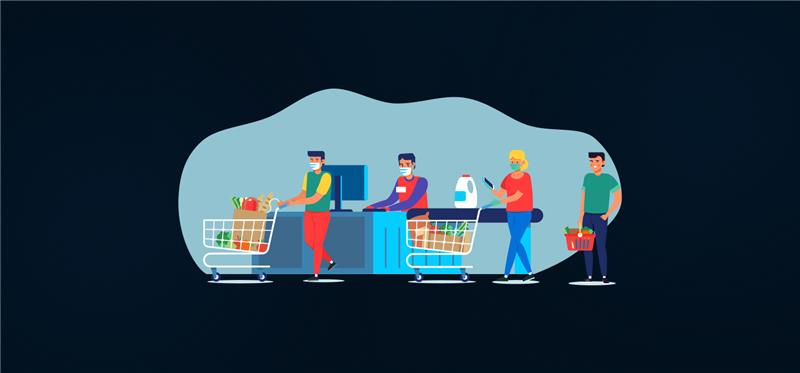RPA in Retail Industry in USA: Driving Growth and Customer Experience
Robotic Process Automation (RPA) involves software bots that handle repetitive tasks by mimicking human actions in digital systems. RPA in retail industry in the USA addresses operational demands amid rising labor costs and shifting consumer behaviors. Retailers deploy RPA to manage inventory, process orders, and support customers, which supports expansion and refines interactions with shoppers.
The USA RPA market leads globally, with North America holding the largest share. Projections indicate the global RPA market experiencing growth at a 43.9% CAGR through 2030 (Flobotics, 2025). This technology enables firms to scale operations while maintaining service quality, contributing to mid-single-digit industry growth in 2025.
RPA Implementation in USA Retail
Deploying RPA in retail industry in the USA requires identifying rule-based tasks, selecting providers, mapping processes, and testing bots before full integration.
Key Use Cases
Robotic Process Automation transforms key retail operations by automating repetitive, rule-based tasks. Below is an in-depth look at five critical use cases, detailing their processes, benefits, and real-world applications of retail automation USA.
1. Inventory Management
RPA bots continuously monitor stock levels across warehouses and stores, ensuring optimal stock availability. They automatically generate replenishment orders based on predefined thresholds, eliminating manual checks.
For discrepancies, such as mismatches between physical and recorded stock, bots cross-reference data from point-of-sale systems and warehouse logs to flag issues for resolution.
Benefits:
- Prevents sales losses from stockouts.
- Minimizes excess inventory costs.
- Reduces manual labor for stock audits.
2. Order Processing
RPA automates verification and fulfillment steps. Bots validate customer details, such as addresses and payment information, against databases, flagging duplicates or errors instantly. After verification, bots coordinate with warehouse systems to process shipments, updating tracking details in real time. This cuts processing time from minutes to seconds, enabling faster delivery.
Benefits:
- Speeds up order fulfillment for better customer satisfaction.
- Reduces errors in order details.
- Handles high order volumes without additional staff.
3. Returns and Refunds
Handling returns and refunds is labor-intensive, but retail automation USA simplifies the process. Bots automatically update inventory records when items are returned, ensuring stock levels remain accurate. They also process refunds by adjusting billing systems and issuing credits or reimbursements based on predefined rules. This reduces processing time compared to manual methods.
Benefits:
- Ensures precise inventory and financial updates.
- Speeds up refund processing for customers.
- Reduces staff workload on repetitive tasks.
4. Sales Analytics
RPA bots integrate data from multiple sources, point-of-sale systems, e-commerce platforms, and customer databases, to provide real-time insights into sales trends and consumer behaviors. They compile and clean data, generating reports on metrics like top-selling products or regional demand patterns. This process, which might take analysts hours, is completed in minutes.
Benefits:
- Enables data-driven decisions with real-time insights.
- Reduces time spent on manual data compilation.
- Supports personalized marketing based on behavior trends.
5. Customer Support
Retail automation in USA employs bots handle inquiries about order status, delivery updates, or product availability by pulling data from CRM systems. They also track orders in real time and send automated updates to customers. For feedback, bots collect responses via surveys and categorize them for analysis, identifying service gaps.
Benefits:
- Provides instant responses to common queries.
- Frees staff for personalized, high-value interactions.
- Improves feedback collection for service enhancements.
Driving Business Growth
RPA reduces operational expenses by automating manual processes, allowing reallocation of resources. In retail, it yields ROI from 30% to 200% in the first year. Efficiency gains include 86% of businesses reporting higher productivity and 59% noting cost reductions. (Flobotics, 2025).
The technology supports scalability, handling increased volumes without proportional staff growth. For instance, automated inventory prevents stockouts, sustaining sales during demand spikes.

Enhancing Customer Experience
RPA integrates data across channels for personalized interactions. Bots analyze behaviors to tailor promotions and recommendations, influencing conversions.
In support, automation handles routine queries via chatbots, providing instant responses on orders and refunds. This frees staff for complex issues, blending efficiency with human touch.
Omnichannel consistency ensures seamless experiences online and in-store. Feedback automation collects and analyzes input, allowing quick adjustments to services. Retailers report improved satisfaction through accurate, timely interactions.
Future Outlook
By 2025, RPA in retail industry in the USA will integrate with AI for handling unstructured data and decision-making. Low-code tools will expand access, fostering citizen development.
In retail, this means advanced personalization and workflow orchestration. According to industry experts, retailers plan to automate 70% of their daily retail store tasks by 2025. (Fortune Business Insights). USA firms will prioritize compliance and efficiency amid tech advancements.
FAQs
What does RPA involve in the USA retail sector?
RPA uses software bots to automate tasks like inventory tracking and order verification in USA retail, focusing on rule-based processes to boost operational speed and accuracy without major system changes.
How does RPA contribute to retail growth in the USA?
RPA cuts costs by up to 59% and raises productivity in 86% of cases, enabling USA retailers to scale operations, optimize supply chains, and reallocate staff to strategic roles for sustained expansion.
In what ways does RPA improve customer interactions?
RPA personalizes experiences through data integration across channels, automates support for quick query resolution, and analyzes feedback to refine services, leading to higher satisfaction and loyalty among USA shoppers.
What are common RPA applications in retail?
Typical uses include automating inventory restocking, order fulfillment, returns processing, sales data analysis, and customer help via bots, all aimed at reducing errors and enhancing efficiency in daily operations.
What trends will shape RPA in retail by 2025?
Integration with AI for data handling, low-code accessibility, and workflow orchestration will dominate, allowing USA retailers to streamline processes and focus human efforts on empathy-driven customer engagements.

 contact
contact

 By
By 


